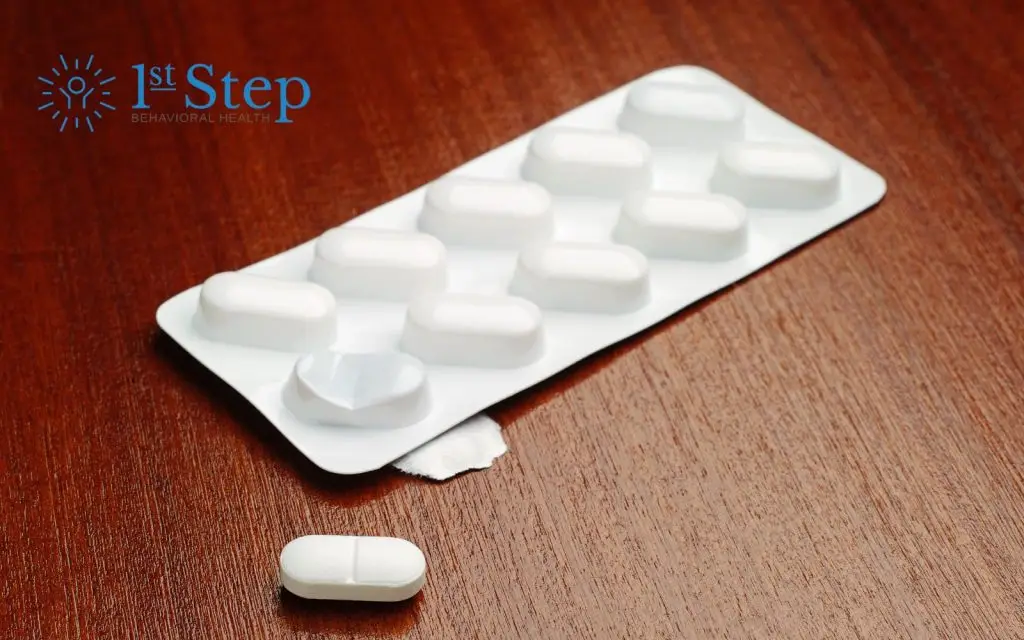For millions of Americans, managing chronic or acute pain is an everyday reality. Over time, the M522 pill has emerged as a common solution, but not without controversy.
This small, white, capsule-shaped tablet is more than just a prescription. It’s a potent combination of oxycodone hydrochloride and acetaminophen, designed to provide significant pain relief. But its power comes with serious consequences, especially for those struggling with addiction or trying to support loved ones through it.
This article explores what the M522 pill is, how it works, who it’s prescribed for, and most importantly, the health risks and dependency issues that come with its use.
What Is the M522 Pill?
The M522 pill is a prescription medication marked with the imprint “M522” on one side. It contains oxycodone hydrochloride 7.5 mg and acetaminophen 325 mg. This combination medication belongs to a class of drugs known as opioid analgesics.
- Oxycodone is a powerful opioid that works by blocking pain signals in the central nervous system (CNS).
- Acetaminophen, also known as paracetamol, is a common fever reducer and pain reliever found in many over-the-counter medicines.
Together, they create a potent formula aimed at managing moderately severe to severe pain, including chronic pain and post-surgical recovery.
When Is It Prescribed?
M522 is typically prescribed for:
- Moderately severe pain
- Severe pain unresponsive to non-opioid treatments
- Chronic pain conditions like cancer or advanced arthritis
- Pain from injuries, surgeries, or muscle spasms
Doctors will often include M522 in a pain management plan when other treatments have failed or are not tolerated.
But this is not a casual pill. It’s classified as a Schedule II controlled substance, meaning it has a high potential for abuse, even when taken at the prescribed dose.
How It Works in the Body
Oxycodone binds to opioid receptors in the brain and spinal cord, changing the way your body perceives and responds to pain. Meanwhile, acetaminophen amplifies oxycodone’s effects and adds additional pain relief.
This synergy can provide significant pain relief, but also dramatically increases the risk of side effects, particularly additive CNS depression when taken with other CNS depressants, such as:
- Alcohol
- Muscle relaxants
- Other CNS depressant drugs
- Benzodiazepines
- Sleep aids
This is why elderly and debilitated patients, as well as those with underlying liver disease or breathing problems, must be monitored extremely closely.
Risks and Side Effects of the M522 Pill
The M522 pill is not without serious health risks. Even at the correct dosage, it can cause:
- Severe drowsiness
- Low blood pressure
- Trouble breathing
- Unusual tiredness
- Severe constipation
- Respiratory depression
- Skin rash or severe skin reactions
- Acetaminophen overdose, leading to acute liver failure
- Difficulty breathing or shallow breathing
- Additive CNS depression if combined with other depressants
If someone is experiencing shallow breathing, confusion, or unresponsiveness, immediate medical attention is critical.
Addiction, Dependency, and Withdrawal
Oxycodone, like all opioids, comes with the risk of physical dependence and opioid addiction, especially when used over extended periods.
Even individuals who take the drug exactly as prescribed may experience severe withdrawal symptoms if they stop suddenly. These may include:
- Nausea and vomiting
- Diarrhea
- Muscle aches
- Anxiety
- Chills
- Insomnia
Those battling addiction often take higher-than-prescribed doses, combine the pill with over-the-counter drugs, or crush it to snort or inject — all of which elevate the risk of significant respiratory depression, overdose, and even death.
According to the CDC, in 2022, over 80,000 overdose deaths in the U.S. involved opioids, with prescription drugs like oxycodone playing a significant role (CDC, 2023).
Use in Vulnerable Populations
Special caution is required when prescribing or using M522 in:
- Elderly patients, who may be more sensitive to CNS depressant effects
- Debilitated patients, including those with cancer or advanced disease
- Patients with severe bronchial asthma
- Those with mental health problems
- Women who are pregnant or breastfeeding, since oxycodone can pass into breast milk
Missed Dose and Overdose: What to Do
If a dose is missed, the general guidance is not to double up. Instead, take the next dose at the scheduled time. Doubling the dose increases the risk of respiratory depression, especially if the body is not used to higher concentrations.
Overdose symptoms include:
- Extreme drowsiness
- Severe breathing problems
- Slow heartbeat
- Cold or clammy skin
- Blue-colored lips or fingernails
Call emergency medical attention immediately in the event of an overdose. Naloxone (Narcan) may temporarily reverse the effects, but hospital care remains essential.
Drug Interactions and Contraindications
Because the M522 pill impacts the central nervous system, combining it with other medications can be dangerous. Avoid mixing with:
- Other CNS depressants
- Muscle relaxants
- Over-the-counter medicines like certain antihistamines or cough suppressants
- Alcohol
- Certain antidepressants or anti-anxiety medications
Always follow the prescribing physician’s and healthcare provider’s instructions closely.
Getting Help
For people struggling with opioid addiction, pain relief is complicated. You or your loved one may genuinely suffer from moderate to severe pain, yet the risks of using a drug like M522 may outweigh the benefits.
Speak with a healthcare provider about:
- Non-opioid medications
- Physical therapy
- Nerve blocks
- Mental health support
- Lifestyle changes
- Supervised detox and opioid treatment programs
Many healthcare professionals are now using multimodal pain management — combining non-opioid medications with therapies like cognitive behavioral therapy, acupuncture, or yoga to address both the physical and emotional aspects of pain.
The Bottom Line
The M522 pill — a combination of acetaminophen and oxycodone hydrochloride — can offer powerful relief for significant pain. But it’s not just a pain reliever; it’s a high-risk opioid that should be taken with the utmost caution, especially by those vulnerable to addiction.
Managing pain doesn’t have to come at the cost of your health, your relationships, or your future. If you or a loved one struggles with opioid abuse or addiction, find treatment and support to overcome it at First Step Behavioral Health. Contact our intake team to learn more about your treatment options or to find support at any stage of your recovery journey.
FAQ: M522 Pill and Opioid Use – What You Need to Know
1. Is the M522 pill the same as Percocet?
Yes and no. The M522 pill contains the same active ingredients as specific formulations of Percocet — oxycodone hydrochloride and acetaminophen.
However, Percocet is a brand name, while M522 is a generic version produced by a different manufacturer. Although chemically similar, inactive ingredients (such as binders and fillers) may vary slightly.
2. Can you build tolerance to the M522 pill?
Yes. Over time, the body can become less responsive to the same dose of oxycodone, requiring higher doses for the same level of pain relief. This is known as tolerance and often precedes physical dependence. Tolerance can develop in as little as a few weeks with daily use, especially without medical supervision.
3. Is it safe to stop taking the M522 pill abruptly?
No. Stopping suddenly can cause withdrawal symptoms, including anxiety, nausea, sweating, and muscle pain. If you’ve been taking M522 for more than a few days, especially at higher doses, speak with a healthcare provider about tapering the dose gradually to avoid severe discomfort or medical complications.
4. Can the M522 pill affect mental health?
Yes. Beyond its physical effects, oxycodone can influence mood, cognition, and behavior. Some users experience depression, irritability, or mood swings, particularly during withdrawal or long-term use. In some cases, opioid use may mask or worsen underlying mental health problems, such as anxiety or PTSD.
Sources:
- Centers for Disease Control and Prevention (CDC), “Drug Overdose Deaths in the U.S. Top 100,000 Annually,” 2023.
- U.S. Food & Drug Administration (FDA), “Labeling for Oxycodone and Acetaminophen Tablets.”
- National Institute on Drug Abuse, “Prescription Opioids,” 2023.
- CDC Opioid Data and Resources: www.cdc.gov/opioids
Jump to a Section
Call (855) 425-4846
